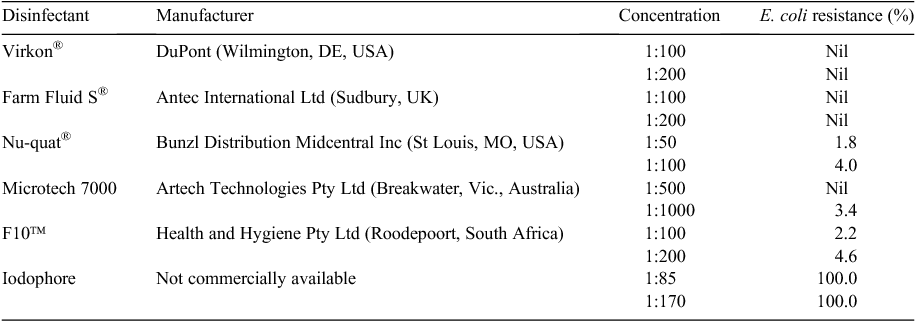Disinfectant susceptibility in south east Australian pig herds
L. K. van Breda A and M. P. Ward A BA Sydney School of Veterinary Science, The University of Sydney, Camden, NSW 2570.
B Corresponding author. Email: michael.ward@sydney.edu.au
Animal Production Science 57(12) 2493-2493 https://doi.org/10.1071/ANv57n12Ab106
Published: 20 November 2017
Escherichia coli (ETEC) causes severe diarrhoeal diseases in piglets resulting in large production losses to the Australian pig industry. Antibiotics are often used to manage this problem, but resistance can develop over time. Disinfectants can be used as an alternative (or additional) control option for E. coli, by reducing E. coli environmental contamination. However, disinfectant effectiveness has been poorly investigated in Australia. To assess disinfectant resistance, a cross-sectional survey of 22 commercial pig herds located in south-east Australia was conducted between September 2013 and May 2014. Fifty faecal samples were collected from each herd, 10 from pre- and 40 from post-weaned piglets. Faecal samples were collected off the floor of piglet pens (approximately five samples per pen). Fifteen presumptive E. coli isolates were randomly selected from diarrhoeal and non-diarrhoeal samples (including β- and non-β-haemolytic isolates) and confirmed by matrix-assisted laser desorption/ionisation time-of-flight mass spectrometry (MALDI-TOF MS) (Microflex LT MALDI BioTyper; Bruker Biosciences, Preston, VIC, Australia). Isolates (n = 325) were screened for susceptibility to six veterinary disinfectants using MIC broth microdilution and breakpoints according to CLSI guidelines (CLSI 2012). Escherichia coli isolated from pre- and post-weaned piglet pens showed high susceptibility (≥95%) to five of the six disinfectants screened (Table 1).

|
Disinfectant use in combination with strict cleaning and hygiene protocols could effectively manage E. coli disease and limit other enteric bacteria commonly found in the piglet pen environment. This study highlights the effectiveness of disinfectant use as a management tool for E. coli associated with diarrhoea in piglets. Further work could monitor the effectiveness of these disinfectants on-farm to reduce other species of endemic bacteria.
References
CLSI (2012) Performance Standards for Antimicrobial Disk and Dilution Susceptibility Testing for Bacteria Isolated From Animals; Secondary Informational Supplement. VET01–S2. 33, 1–188. (Clinical and Laboratory Standards Institute: Wayne, PA)Supported by Pork CRC Limited Australia.


